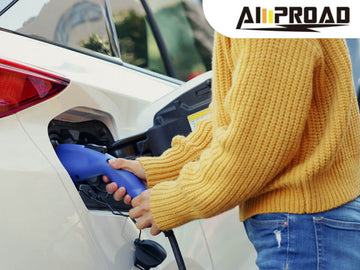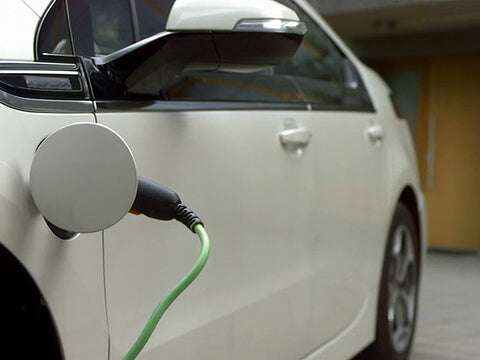
Ever plugged your electric car in and wondered why it takes so long to charge? The type of charger you use can definitely impact speed, but there's more to the story than just the plug. This article will dive into the world of EV charging, explaining the difference between Type 1 and Type 2 connectors, and how they influence how fast your electric car gets juiced up. We'll also explore other factors that play a crucial role in charging speed, so you can get the most out of your electric vehicle.
Are Type 1 and Type 2 chargers different types of charging levels (Level 1, Level 2, DC Fast Charging)?
Plugged your electric car in and wondering why it takes forever to charge? The type of charger you use definitely matters, but there's more to it than just the plug itself. Let's clear up the confusion around Type 1 and Type 2 connectors and how they affect charging speed.
First, it's important to understand that Type 1 and Type 2 are connector types, not charging levels. There are three main charging levels for electric vehicles: Level 1, EVSE Level 2, and DC Fast Charging. Level 1 uses a standard 120-volt household outlet and is the slowest option, taking a very long time to fully charge your car. This is typically used for emergencies or topping off your battery when you have extra time.
Level 2, on the other hand, is the most common charging option for home and public charging stations. These Level 2 EV chargers use a 240-volt outlet, similar to your dryer or oven, and deliver significantly faster charging speeds. Here's where Type 1 and Type 2 come in. Both connector types can be used with Level 2 chargers, but they're not interchangeable. Type 1 is more common in Japan and North America, while Type 2 is the standard in Europe and most of Asia.
So, while Type 1 and Type 2 connectors won't affect the overall speed potential of a Level 2 charger, they determine which charging cable you'll need for your car. The bigger factor influencing charging speed within a Level 2 system is the amperage the charger can deliver. Higher amperage translates to faster charging, so it's important to consider both the charger's capabilities and your car's limitations when estimating charging times.
Do Type 1 and Type 2 connectors impact the voltage delivered to the car (120v vs 240v)?
Let's clear up the confusion around Type 1 and Type 2 connectors and how they affect charging speed.
Connector Types vs. Charging Levels
First, it's important to understand that Type 1 and Type 2 are connector types, not charging levels. There are three main charging levels for electric vehicles:
- Level 1: This uses a standard 120-volt household outlet and is the slowest option, taking a very long time to fully charge your car. This is typically used for emergencies or topping off your battery when you have extra time.
- Level 2: This is the most common charging option for home and public charging stations, including Tesla destination charger. These Level 2 EV chargers use a 240-volt outlet, similar to your dryer or oven, and deliver significantly faster charging speeds.
- DC Fast Charging: This is the king of charging speed, using special stations with high-voltage direct current to deliver a quick boost to your battery. However, DC Fast Charging isn't suitable for regular charging due to potential wear and tear on the battery.
Type 1 vs. Type 2: A Matter of Connection, Not Speed
Here's where Type 1 and Type 2 come in. Both connector types can be used with Level 2 chargers, but they're not interchangeable. Type 1 is more common in Japan and North America, while Type 2 is the standard in Europe and most of Asia.
So, while Type 1 and Type 2 connectors won't affect the overall speed potential of a Level 2 EV charger, they determine which charging cable you'll need for your car. Think of it like having different plug shapes for different regions – the plug itself doesn't affect how fast your phone charges, but you need the right one to connect!
The Bigger Player: Voltage and Amperage
The bigger factor influencing charging speed within a Level 2 system is the combination of voltage and amperage the charger can deliver. Here's a breakdown:
- Voltage: Level 2 chargers typically use 240 volts, compared to Level 1's 120 volts. Higher voltage allows for more power to flow, which translates to faster charging.
- Amperage: This refers to the amount of current flowing through the cable. Just like water pressure, higher amperage allows for more electricity to be delivered at once, further accelerating charging speed.
Therefore, it's important to consider both the charger's capabilities (voltage and amperage) and your car's limitations when estimating charging times. Some electric vehicles have a maximum amperage they can accept, so even a powerful charger won't push the charging speed beyond that limit.
Are there any limitations on charging speeds due to the car itself, beyond the charger type?
While the type of charger plays a significant role, it's not the only factor governing how fast your electric car gets juiced up. The car itself can also impose limitations on charging speeds in a few key ways:
- Battery Capacity: Just like a larger gas tank takes longer to fill, a car with a bigger battery pack will naturally take longer to charge compared to one with a smaller capacity. Even if you're plugged into a super-fast charger, the car can only accept electricity as quickly as its battery can handle it.
- Charging Acceptance Rate: This refers to the maximum rate at which a car's battery can accept electricity. Think of it like a faucet – some batteries have a wider opening, allowing for a faster flow of electrons (electricity) during charging. This rate is determined by the battery's chemistry and thermal management system. While a powerful charger can deliver a lot of current, the car's charging acceptance rate dictates how much of that current the battery can actually absorb at a given time.
- Battery Temperature: Extreme temperatures, both hot and cold, can impact charging speed. For optimal performance and battery health, most electric vehicles regulate charging speeds when the battery is too hot or too cold. The car's thermal management system will prioritize keeping the battery within a safe operating temperature range, even if it means slowing down the charging process.
Understanding these car-imposed limitations will help you set realistic expectations for charging times. Even with a powerful charger, factors like battery capacity and acceptance rate will influence how long it takes to get your car fully charged.
How important are Type 1 and Type 2 connectors compared to other factors affecting charging speed?
While Type 1 and Type 2 connectors are crucial for establishing a connection between your car and a charger, their impact on charging speed is secondary. They primarily determine compatibility – ensuring you have the right plug for your car and the charging station.
The true powerhouses when it comes to charging speed lie elsewhere:
- Charging Level: Level 2 charging, with its 240-volt output, significantly outpaces Level 1 chargers that rely on standard household outlets. DC Fast Charging takes the crown for speed, but its use is reserved for occasional boosts due to potential battery wear.
- Voltage and Amperage: Within a Level 2 system, the interplay between voltage (typically 240 volts) and amperage dictates the actual charging speed. Higher amperage allows for more electricity to flow, accelerating the process.
- Car-Related Factors: Battery capacity, charging acceptance rate, and even temperature can all influence how quickly your car charges. A larger battery takes longer to fill, while a car's inherent ability to accept electricity plays a major role. Additionally, extreme temperatures can trigger the car's thermal management system to slow charging for battery health reasons.
All in all, Type 1 and Type 2 connectors are essential for compatibility, but the real speed demons are the charging level, voltage/amperage combination, and your car's own characteristics. By understanding these factors, you can make informed decisions about charging options and set realistic expectations for how long it takes to get your electric car back on the road.
FAQs / People Also Ask
Q: Are Type 1 and Type 2 connectors the same?
A: No, Type 1 and Type 2 are different connector shapes, but they both function with Level 2 chargers. Type 1 is more common in North America and Japan, while Type 2 dominates Europe and most of Asia.
Q: Do Type 1 and Type 2 connectors affect charging speed?
A: Not directly. They determine which charging cable you need for your car to connect to the charger, but they don't impact the overall speed potential of a Level 2 charger.
Q: What factors influence charging speed the most?
A: The main factors influencing charging speed are:
- Charging Level: Level 2 chargers are significantly faster than Level 1 chargers, and DC Fast Charging offers the quickest option, although for occasional use only.
- Voltage and Amperage: Level 2 chargers use 240 volts, allowing for more power flow than Level 1's 120 volts. Within Level 2, higher amperage translates to faster charging.
- Car-Related Factors: Battery capacity (larger batteries take longer), charging acceptance rate (a car's ability to accept electricity), and battery temperature (extreme temperatures can slow charging) all play a role.
Q: How can I find out which type of connector my car uses?
A: Consult your car's owner's manual or manufacturer's website for information on your car's charging port type.
Q: How can I find out the charging speed of a public charging station?
A: Look for information displayed on the charging station itself or consult the app of the network that operates the station. The charging speed will typically be indicated in kW (kilowatts).




